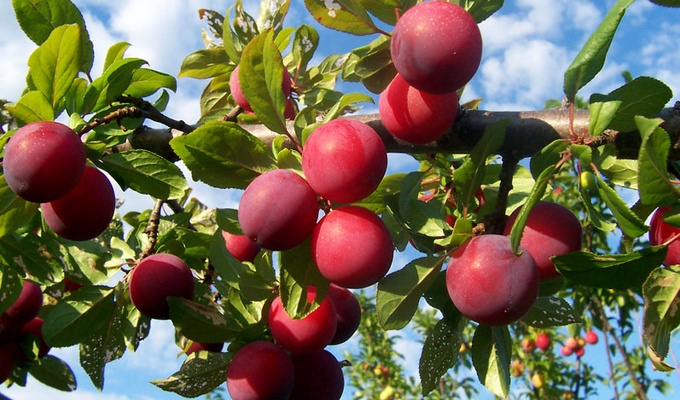The Japanese plum (Prunus salicina), also called the Chinese plum, is a deciduous fruit tree native to China, or the stone fruit from this tree.
The Japanese plum species has been cultivated to produce hundreds of commercial plum cultivars, including Santa Rosa, Burbank, Ozark Premier, Shiro, Vampire, Vanier, and Wickson.
Fruit is typically round or oval, with smooth skin of varying colors including red, purple, and yellow, and is notable for its short post-harvest shelf life—lasting only 3–4 days at room temperature and up to 2 weeks when refrigerated. Due to this perishability, Japanese plum is frequently processed into jams, jellies, and fermented beverages.
In China, the fruits are also consumed in candied and salted forms, sometimes flavored with licorice.
In Japan, where it is called sumomo (すもも / 李), the fruit is less popular than ume (梅, Prunus mume), whose tree is called Chinese plum or Japanese apricot in English. It is eaten fresh and also pickled or featured in traditional festival sweets such as anzuame, and used in the production of liqueurs including sumomo shu.
